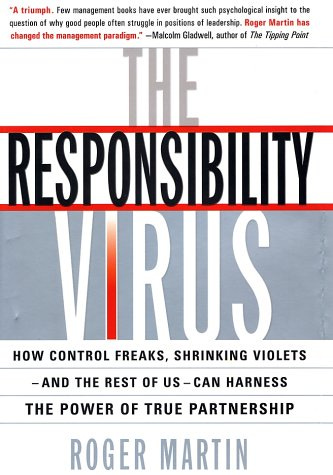The Responsibility Virus
Master a proven method to facilitate effective team collaboration and enhance productivity.
Good afternoon, friends! Welcome to the ReadVault Club. I'm Tom Niklas, a seasoned writer and book reviewer. Please subscribe to me and join us in reading 52 books a year together.
Today, we'll discuss a book titled "The Responsibility Virus." You might be wondering, "What's a responsibility virus?" You just need to learn this term, and it will help improve your work.
What's a responsibility virus?
In modern organizations, we often have a significant challenge: When you grant authority to an employee, you assume the division of responsibilities is clear enough, right?
Many would say, "Of course, the authority should be clearly defined." However, how clear should this authority be? If it's exact, to the point where the person says, "This is my responsibility, I'll handle it. Anything else isn't my concern," you'll notice a shift in the organizational atmosphere. Some might say, "Well, I'm only responsible for this task; you never told me about that other matter."
Or they might respond, "If you've entrusted me with this, then stay out of it. You assigned it to me, so let me handle it without your interference." But if you want to oversee it, then you manage it, and I won't. When an organization faces such a situation, where it's either "my responsibility" or "not my concern," you know we've become infected with the responsibility virus.
On the other hand, if we’d like to share responsibilities, it becomes challenging to define the boundaries. How specific should we be about who's responsible for what, or should we share accountability? If we share it and something goes wrong, who's to blame? How should the responsibility be borne?
Almost every organization faces this dilemma. While at The Washington Post, I observed that some young employees could be impulsive and easily offended. If you made a few comments, they might retort, "Then don't let me handle it." Because if you assigned it to me, shouldn't you refrain from commenting? But in reality, if you didn't provide feedback, their work would suffer.
So, how do we strike the right balance? How can we resolve this responsibility virus issue? This book's core purpose is to address these questions, and I believe it will benefit individuals, businesses, and organizations alike.
Hero's fallacy
We open with a case study about Rudy Giuliani, the former mayor of New York City. Mr. Giuliani was a pivotal figure in NYC's history, especially during the 9/11 tragedy. Throughout that crisis, Giuliani proved himself a tenacious leader, guiding New Yorkers through the aftermath of the terrorist attacks.
However, a decision involving public schools painted Mr. Giuliani in a contrasting light, drawing intense criticism from the public. Why would the same individual, a recognized leader, receive such polarized assessments for different situations? The author argues that Giuliani's initial stance was flawed.
After 9/11, Giuliani's crucial message was one of unity and collective resilience, calling for New Yorkers to band together in the face of adversity. Yet, when the public school issue erupted, Giuliani's public stance was dismissive: "Don't question me; I'm the mayor, and what I say goes." This "my way or the highway" approach exemplified the "hero's fallacy."
The hero's fallacy stems from the portrayal of superheroes in movies and TV shows. The typical superhero single-handedly confronts danger and solves every problem, expecting others to simply follow their lead. Unfortunately, many managers and leaders fall into this trap, believing that to earn trust and lead effectively, they must have the final say – a flawed notion.
From sports teams to cities and nations, the hero's fallacy, or the "responsibility virus," plagues organizations of all sizes. Individuals struggle to differentiate between passion and an appropriate sense of responsibility, blurring the lines of accountability.
The mechanics of the responsibility virus
Next, we'll explore the mechanics of the responsibility virus and why it emerges. One case involves Mike, the general manager of a magazine company.
To drive the rapid growth of the magazine, Mike hired Caroline as an advertising sales manager. Initially, Caroline excelled, but when the magazine industry declined, challenges arose.
One day, Caroline anxiously approached Mike, confessing that a major client might leave, and she couldn't handle the situation alone. Alarmed, Mike offered to entertain the client and collaborate on a proposal jointly. Eventually, Mike took over, personally writing the proposal and making the pitch, relegating Caroline to a supporting role.
Increasingly, Mike wondered why Caroline seemed incapable, while Caroline felt undermined by Mike's overbearing management style. "Since Mike insists on handling everything, I might as well let him," she thought. Ultimately, Caroline was fired, and Mike, overburdened, was later dismissed by the board – a textbook case of the responsibility virus.
This is a typical example of how the responsibility virus can inflict damage on an organization. When those at different levels fail to grasp the appropriate extent of delegated authority and how to collectively participate, problems arise.
Keep reading with a 7-day free trial
Subscribe to ReadVault to keep reading this post and get 7 days of free access to the full post archives.



